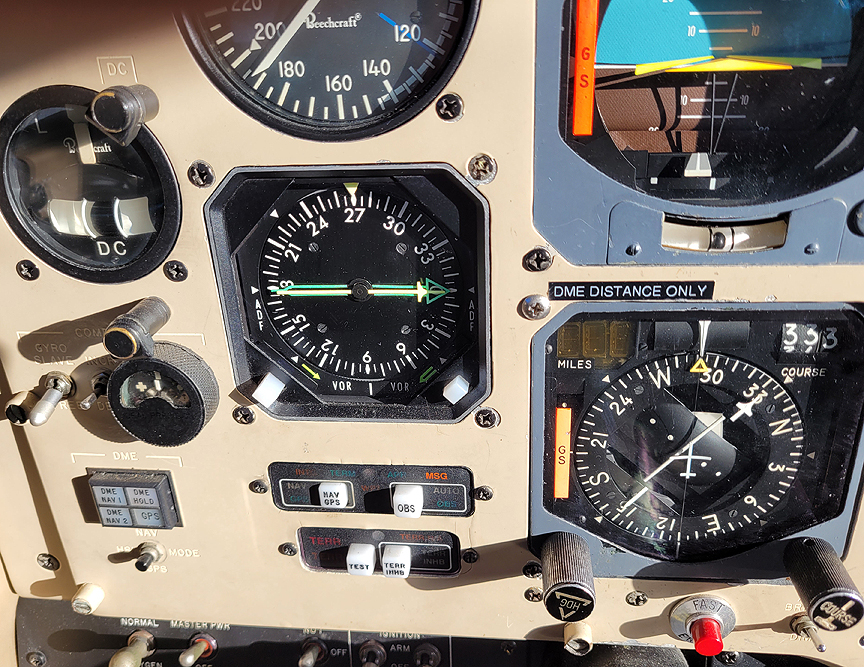The Importance of the Scan
Every pilot learns to do “The Scan”. This is the act of reviewing all instruments and indicators in a repeatable sequence. It would include heading, altitude, vertical speed, airspeed, and several engine instruments at a bare minimum.
The following is a story where I learned how important that scan is, and also to add a couple of items to my regular King Air scan.
To Pensacola and Back
It was very early. Too early. That time they call “O’Dark Thirty.” It’s dark out, everything is closed, including St. Augustine tower (SGJ), where this particular King Air 200 is based. The flight over to Pensacola (PNS) had its own issues but that’s for another article.
My mission was to fly to PNS and pick up 9 passengers to bring to SGJ for a Christmas party, and then bring them back to PNS later that day. They were waiting for me at the FBO so we began loading up. Every seat was full.

I went up to FL 270 for some favorable tail winds. I was riding along, talking to my “co-pilot” Charles, who although was one of the passengers, had a private pilot license and had some aviation experience in the Marines.
Suddenly we got a master warning light, as the autopilot disconnected and both attitude and heading gyros tumbled momentarily. The warning light was for “INVERTER FAIL.” This aircraft has some AC electronics so it uses one of two inverters to create AC power.
I switched to the other inverter and the fail went away. However, Charles pointed to engine gauges, showing the left engine at zero fuel flow, zero oil pressure and zero oil temperature. The engine was running smoothly though, so we assumed it was an electrical problem with the gauges.
I decided to do a full scan and check everything. While sliding my eyes past the pressurization indicators, not part of my normal scan, at least not until now, I noticed the cabin altitude was 13,500 and climbing at 500 fpm. The cabin differential was only about 2.5psi. (OK I know that a some people won’t understand that last paragraph. Ask me or someone else who flies at high altitude for an explanation of how pressurization works when you see one of us.)

What concerned me is that we didn’t get a “CABIN ALT” warning. It’s supposed to go off when the cabin altitude goes above 10,000 ft.
I pointed to the gauge and told Charles “We’re going to need to descend.” We asked JAX CTR for lower, citing a partial pressurization failure. They gave us descent to 13,000. On the way down everything came back. Charles, an excellent note taker, wrote: “11 minutes later at 14,500, gauges came back and normal pressurization resumed.”
We continued the flight and landed at SGJ without incident. I then grounded the aircraft and told the owners they would need to find another aircraft to fly everyone home that evening.
So What Did I learn?
There were a few things that got my attention on this flight:
1: It’s really helpful to have another pilot in the cockpit, no matter what the experience level. There is no substitute for another set of eyes. Charles was very helpful, even though he had never flown a King Air before.
2: Don’t rely on a CABIN ALT light to tell you the pressure is falling (or cabin rising). We didn’t get a light till it rose past 14,000 ft. It is definitely possible to get a partial pressurization failure. In the annual recurrent training I required to take, we never discuss a partial failure, just the complete failure (explosive decompression.)
3: I didn’t notice a slow cabin rise. I felt nothing, my ears didn’t pop or anything like that. I can see now how dangerous this insidious failure is. I now include both pressurization gauges in my scan!
